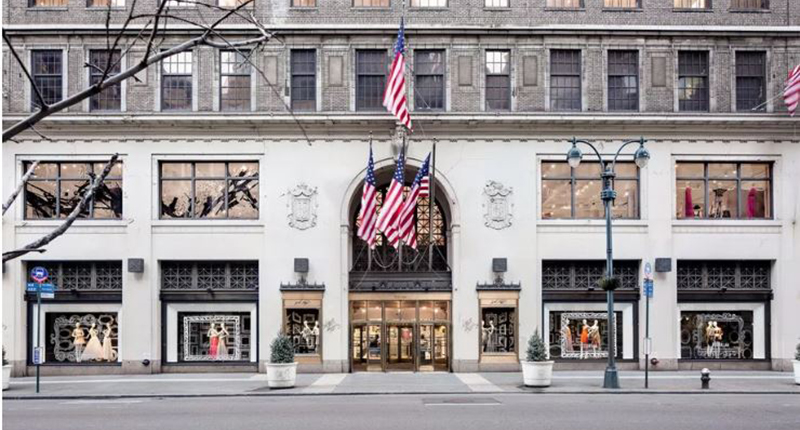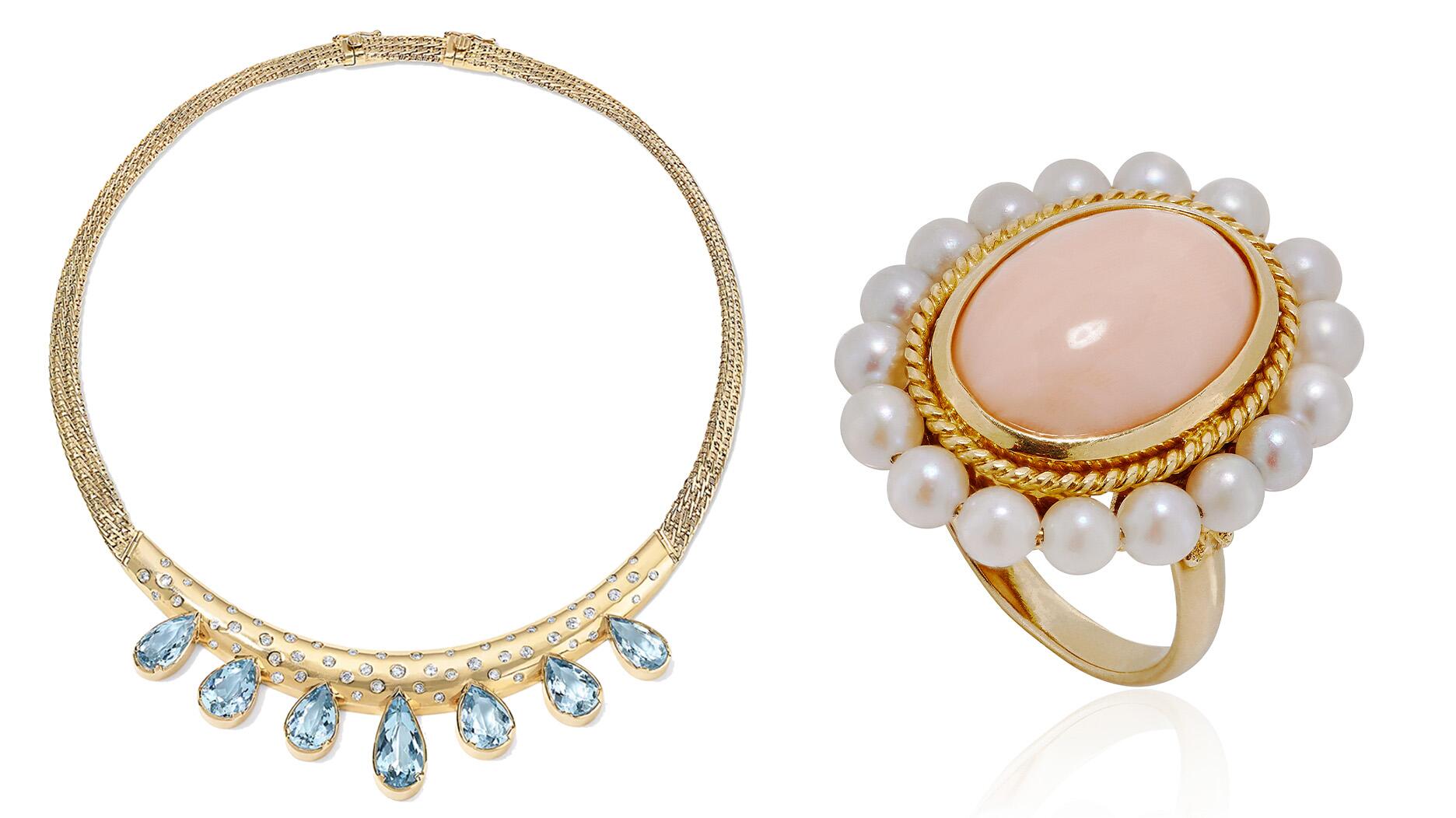The couple pleaded guilty to concealing at least $127 million in cash transactions at its precious metals businesses.
Lord & Taylor to Close All Stores After 200 Years
As the department store chain prepares to liquidate, here’s a look back at its heyday and how it went bankrupt.

Once a heavyweight in the retail space, here’s a look at how it rose to success and what led it to bankruptcy.
Lord & Taylor was a trailblazer in its heyday.
English immigrants Samuel Lord and George Washington Taylor opened a dry goods store in Manhattan’s Lower East Side in 1826.
Lord & Taylor later found success selling women’s clothing, and was notable for its fashion sense and commitment to customer service. It went public in 1904.
The store relocated six times before moving uptown into its Fifth Avenue flagship in 1914.
At its height, Lord & Taylor was a retail pioneer, introducing the concept of personal shopping and selecting Dorothy Shaver as its president in 1945, the first woman to lead a major retail store.
The company was one of the first to branch out into the suburbs and to promote American designers.
Lord & Taylor struggled to compete in a changing retail environment.
In search of success, Lord & Taylor changed hands several times.
It was acquired by May Department Stores in 1986, which was then acquired by Federated Department Stores, now Macy’s Inc., in 2005.
Private equity firm NRDC Equity Partners acquired Lord & Taylor in 2006. In 2008, NRDC acquired Hudson’s Bay Company, which also owns Saks Fifth Avenue, and put Lord & Taylor under the HBC umbrella, where it remained for more than a decade.
Once a beacon of department store glamour, Lord & Taylor struggled to compete in a changing world.
It sold its flagship Fifth Avenue store, its home for more than a century, to WeWork in 2017. Amazon moved into the building last month.

While Lord & Taylor’s flagship was being sold, a $250 million renovation of neighboring Saks Fifth Avenue was underway, which included The Vault, a revamp of its basement into a swanky space dedicated to high jewelry and watches.
In 2019, Hudson’s Bay Company was whittling down its portfolio, looking to shift its focus to the more successful Saks and Hudson’s Bay.
Lord & Taylor got the boot.
The retailer was acquired for the last time by Le Tote, a clothing rental subscription service company.
Le Tote tried to revamp the brand, opening a Lord & Taylor pop-up shop and making the company more tech-savvy, but it was unsuccessful.
A location in Dearborn, Michigan made headlines in 2000 when a private security guard was charged with involuntary manslaughter after using a fatal chokehold on shopper Frederick Finley, a Black man who was suspected of shoplifting. Thousands protested outside of its store.
In 2018, the retailer was in the spotlight again after an HBC security breach compromised the personal information of shoppers.
The COVID-19 pandemic put pressure on the struggling retailer.
Lord & Taylor was already fighting to stay afloat when the COVID-19 pandemic struck, forcing the temporary closure of its 38 locations in March.
Last month, Lord & Taylor and Le Tote filed for Chapter 11 bankruptcy protection, joining heavyweights JC Penney and Neiman Marcus.
At the time of filing, its debt obligations reached nearly $140 million.
With a restructuring plan in place, the retailer planned to shutter 24 of its locations and searched for a new owner.
When a buyer failed to emerge, it decided to liquidate all 38 locations.
Store closing sales, orchestrated by liquidators Hilco Merchant Resources and Gordon Brothers, have already begun.
Lord & Taylor joins a long list of bankruptcies and its demise leaves few department stores standing.
As retail titan Amazon settles into Lord and Taylor’s former flagship, the future of department stores remains uncertain.
Barneys New York, a fellow New York department store staple, closed its doors for good last year.
From JC Penney and Sears to Neiman Marcus, major players have recently filed for bankruptcy and shuttered stores.
More than 100 consumer-focused companies went bankrupt this year as of Aug., according to an S&P Global Market Intelligence report.
Of those, 85 were categorized as consumer discretionary, including department stores as well as retailers like J. Crew and Ascena Retail Group.
The Latest

Consumers shared concerns about prices, inflation, tariffs, trade, and politics in the survey’s write-in response section.

In February 2026, the auction house will move its headquarters to the former Steinway Hall, a neoclassical landmark on Billionaires’ Row.

How Jewelers of America’s 20 Under 40 are leading to ensure a brighter future for the jewelry industry.

The new show will take place Jan. 23-25, 2026.


The former BHP Billiton leader and Gemfields chairman is remembered for his influential leadership throughout his 50-year mining career.

The LVMH-owned brand has partnered with the costume design union to revamp its award for 2026.

Roseco’s 704-page catalog showcases new lab-grown diamonds, findings, tools & more—available in print or interactive digital editions.

In the recent multi-shipment seizure, CBP also found counterfeit Audemars Piguet, Moncler, and Chrome Hearts items.

Helzberg’s Chief Retail Officer Mitch Maggart shared details about its tests of a new store concept rooted in an elevated luxury experience.

Jewelers of America execs and National Jeweler editors discuss tariffs, the sky-high gold price, and the engagement that broke the internet.

The luxury goods company said founder Ippolita Rostagno will remain at the brand’s helm.

Laura Burdese, who joined the Italian luxury brand in 2022, will take on the role in July.

The National Jeweler editors revisit the most noteworthy industry happenings and design trends from 2025.

Need a gift for the cat lover who has everything? Look no further than our latest Piece of the Week.

It purchased the “Grosse Pièce,” an ultra-complicated Audemars Piguet pocket watch from the ‘20s, for a record-breaking price at Sotheby’s.

The lab-grown diamond grower now offers custom engagement and fashion jewelry through its Kira Custom Lab Jewelry service.

Chandler got his start at Michelson Jewelers and has served as DCA president and CEO since 2001. He will retire at the end of the month.

The boutique is slated to open this week inside Terminal 8, offering pre-owned Rolex watches and more to international travelers.

Sponsored by Digital Monitoring Products

The special-edition egg pendant ingested in a New Zealand jewelry store was recovered after a six-day wait.

Associate Editor Natalie Francisco plays favorites with Piece of the Week, selecting a standout piece of jewelry from each month of 2025.

The “Love and Desire” campaign is inspired by the magic that follows when one’s heart leads the way, said the brand.

Two awardees will receive free tuition for an educational course at the Swiss lab, with flights and lodging included.

Berta de Pablos-Barbier will replace Alexander Lacik at the start of January, two months earlier than expected.

Sotheby’s held its first two jewelry sales at the Breuer building last week, and they totaled nearly $44 million.

Winners will receive free registration and lodging for its fourth annual event in Detroit.


























